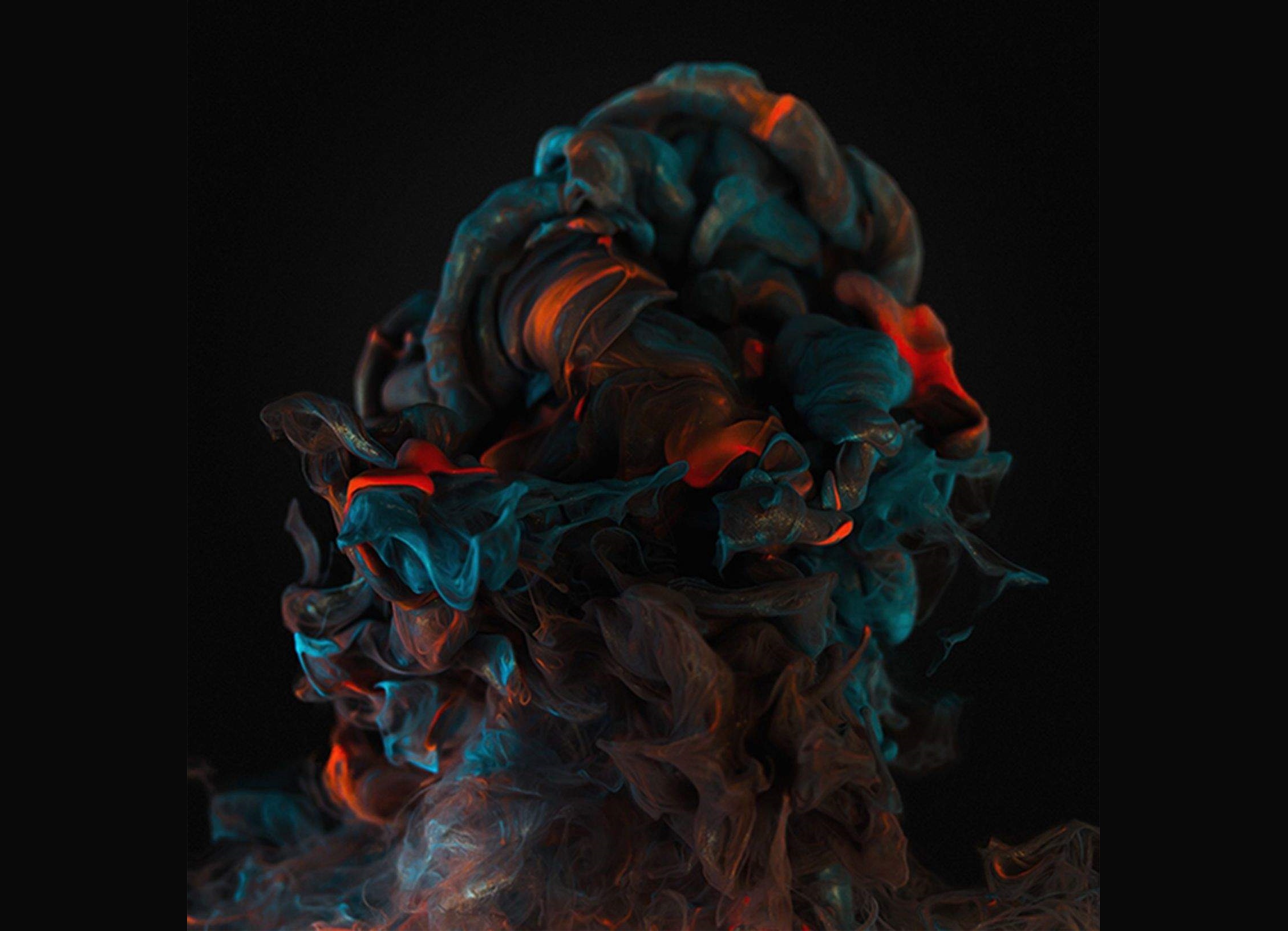Sparse melodic outbursts of glassy plucks, driven by a shift register sequencer with some twists.
Another generative patch built on ZEBU, based around a shift register sequencer (aka a Turing machine) which can inject new notes based on chance. The trick here is that the master control voltage (called ‘Intensity’) increases the VCAs and the LFO speed while SIMULTANEOUSLY reducing the probability of new notes, so the melody floats freely at lower intensity but ‘locks in’ once the intensity increases and a new burst of notes rises. Occasionally the length of the sequencer also changes between 5 and 4 steps, but the step that’s dropped from the melody is kept in memory so it can be injected again later, shuffling the notes of the melodies around. These tricks give the ebb and flow of melodic bursts a very musical – almost human – character, which is what I love most in generative patches like these!
The sound is a basic modal synth (see Christopher’s excellent “Zynth Zecrets” tutorials) with 2-voice polyphony providing nice glassy or metallic plucked sounds, with a probability for the first voice to either skip a note or do some mild ratcheting, providing some neat marimba/xylophone like vibes. There are some asymmetrical delays, but only the highest fractal of the modal synth go into that (so only ‘the highs’ of the sound), giving a nice glassy vibe. At the end there’s a big ambient reverb, external audio input goes through that too.
It’s a very dynamic patch and with it’s Pitch, Env and Intensity CV outputs it can easily serve as the basis of a great generative modular patch!
=====
[OVERVIEW]
-Input/Output: Stereo in, Stereo out
-CPU load: Around 100%
-Build: Initial version built with firmware 2.70
-MIDI: Controls are NOT YET set to CCs (I normally use channels 21/36, see CONTROLS section for details).
-CV Inputs:
1) Rate CV
2) Spread CV
3) Refresh CV
4) Rez CV
-CV Outputs:
1) Pitch Out (1V/oct)
2) Trigger Out
3) Intensity CV
4) Base Pitch (1V/oct)
[REVISIONS]
1.0: Initial patch.
[CONTROLS]
There’s not really a need for controls, but I’ve added some macro-controls on PAGE0 (see below for a “Picture Manual” in the comments). The Stereo Output module with gain parameter and the Reverb module are found on PAGE1.
RATE (sets the rate of the master LFO; this is always modulated by Intensity)
SPREAD (sets the spread between lowest and highest notes)
REFRESH CHANCE (Turing sequencer chance of new notes)
REZ (sets the resonance/decay of the voices)
FREQ COLOR (sets the tuning of overtones)
On PAGE1 there are some additional controls:
CV TUNING (for tuning the CV Pitch outputs)
DELAY LVL (sets level of delay line)
BASS LVL (sets level of bass voice)
ZEBU LEFT button = Toggle Bass on/off.
ZEBU LEFT button = Manual activation of Intensity.
ZOIA stompswitches = Unused.
=====
[PATCH STRUCTURE]
There are 2 voices, each consisting of 3 high resonance pinged bandpass filters in parallel. The ‘exciter’ is a plain old Noise module through a VCA, opened by very short AD envelopes, causing the filters to ‘ping’ nice metallic, plucky plinks (=modal synthesis). The voices are cycled through in turns by a 3-track sequencer where step 1 is modulated by a Random module, so that step is either triggered 1x, 2x, 3x or skipped. The voices together go through a master VCA into a Reverb Lite with a long decay time (Plate sounds even better but had to cut some CPU). There is also a Delay Line module with a nice twist; only the highest fraction of each voice goes into it.
The ‘Intensity’ control module for the patch as a whole is a single ADSR, which does many things: it increases the master clock LFO and simultaneously opens the master VCA (via a slew module, so the VCA dies down a bit slower than the ADSR). This master ADSR is triggered by a clocked probability gate, but the probability of a (re)trigger increases as the ADSR decreases – a feedback loop – which creates a nice dynamic ebb-and-flow between flurries of melody and intermittent loose notes (Note: I didn’t add hysteresis, so if you inspect closely, you’ll notice it freaks out a bit, but I didn’t wanna waste CPU on that).
Now, the melody part is a chain of 5 Sample&Hold modules, forming a shift register sequencer (aka Turing machine). There’s a change that a new ‘random’ note is injected (connection is only 50% random and 50% ‘old value’, so it doesn’t jump too far in one go) and there’s some routing with switches that can bypass one of the S&H modules, shortening the loop to 4 steps. The bypassed S&H will keep its value, so if the routing goes back to 5 steps, the old note is recirculated into the melody.
Finally, what makes this melody machine work so well is the feedback between the master ADSR and the probability value of the Turing machine; if there’s a slowly rising cluster of notes, the first ones are more random but as it speeds up and peaks in volume and intensity the notes will ‘lock’ into place and form a more repetitive melody. The quantizer is set to Akebono (intervals 2, 1, 4, 1, 4, 2, 1), which seems to be a variation on a natural minor scale with some additional(?) or removed(?) notes (I think it’s actually the same as one of the Hirajoshi scales), which matches the inharmonic bell-like sounds very well and gives the whole patch a delicious traditional/middle eastern vibe!
=====
[TIPS/TRICKS]
>>> Just let it play as a background patch.
>>> Use the CV outputs to make a bigger, generative ambient Eurorack patch.
[THOUGHTS/IDEAS/PLANS]
This patch is done, no future plans.
If there’s any bugs/questions/remarks/requests or suggestions for improvement, please let me know!
Enjoy!
(Image: Alberto Seveso)



Picture Manual:
Attachment Manual-Duskwalker-63c68fde20b80.jpg